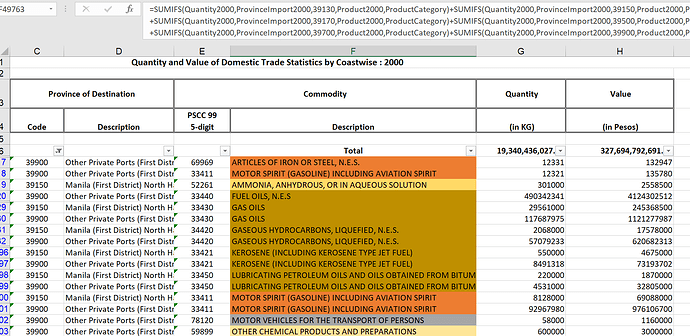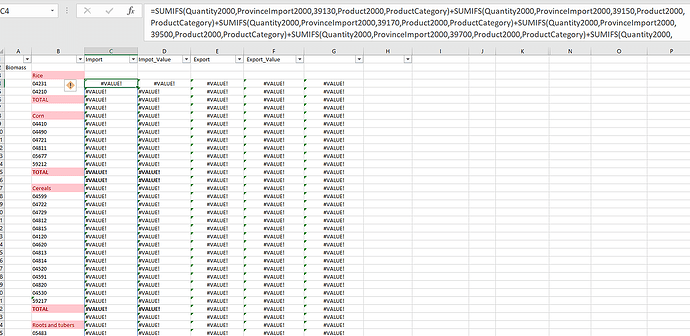structure(list(MaterialCategory = c("Biomass", "Biomass", "Biomass",
"Biomass", "Biomass", "Biomass", "Biomass", "Biomass", "Biomass",
"Fossil fuels", "Fossil fuels", "Fossil fuels", "Fossil fuels",
"Fossil fuels", "Fossil fuels", "Metallic minerals", "Metallic minerals",
"Metallic minerals", "Metallic minerals", "Metallic minerals"
), ProductStage = c("Finished products", "Finished products",
"Finished products", "Raw materials", "Raw materials", "Raw materials",
"Semi-manufactured products", "Semi-manufactured products", "Semi-manufactured products",
"Raw materials", "Raw materials", "Raw materials", "Semi-manufactured products",
"Semi-manufactured products", "Semi-manufactured products", "Finished products",
"Finished products", "Finished products", "Finished products",
"Finished products"), Subcategory = c("Agricultural", "Forestry",
"Other biomass products", "Agricultural", "Fisheries", "Forestry",
"Agricultural", "Forestry", "Other biomass products", "Bituminous crude materials",
"Crude oil", "Natural gas", "Hydrocarbons", "Mineral oils", "Mineral waxes",
"Electrical machines etc", "Machineries, tools, and apparatus",
"Other non-precious metals and cermets finished goods", "Other product of base metals",
"Vehicles automobiles"), Quantity = c(204427548, 265879797, 125853727,
43748319, 30745, 13915185, 280444539, 3882353, 1020700, 5570930,
328096, 820326, 9000, 21068094, 514837, 56432, 694416, 99972,
246136, 175562321), Value = c(11671528491, 13306115837, 4884540047,
14496461223, 2e+06, 672959180, 9805453636, 146841361, 42284927,
301399696, 14304310, 40728200, 5e+05, 1024058906, 27747016, 9219961,
48200970, 4359392, 14457496, 43335477558)), row.names = c(NA,
-20L), groups = structure(list(MaterialCategory = c("Biomass",
"Biomass", "Biomass", "Fossil fuels", "Fossil fuels", "Metallic minerals"
), ProductStage = c("Finished products", "Raw materials", "Semi-manufactured products",
"Raw materials", "Semi-manufactured products", "Finished products"
), .rows = structure(list(1:3, 4:6, 7:9, 10:12, 13:15, 16:20), ptype = integer(0), class = c("vctrs_list_of",
"vctrs_vctr", "list"))), row.names = c(NA, 6L), class = c("tbl_df",
"tbl", "data.frame"), .drop = TRUE), class = c("grouped_df",
"tbl_df", "tbl", "data.frame"))```
![]()


